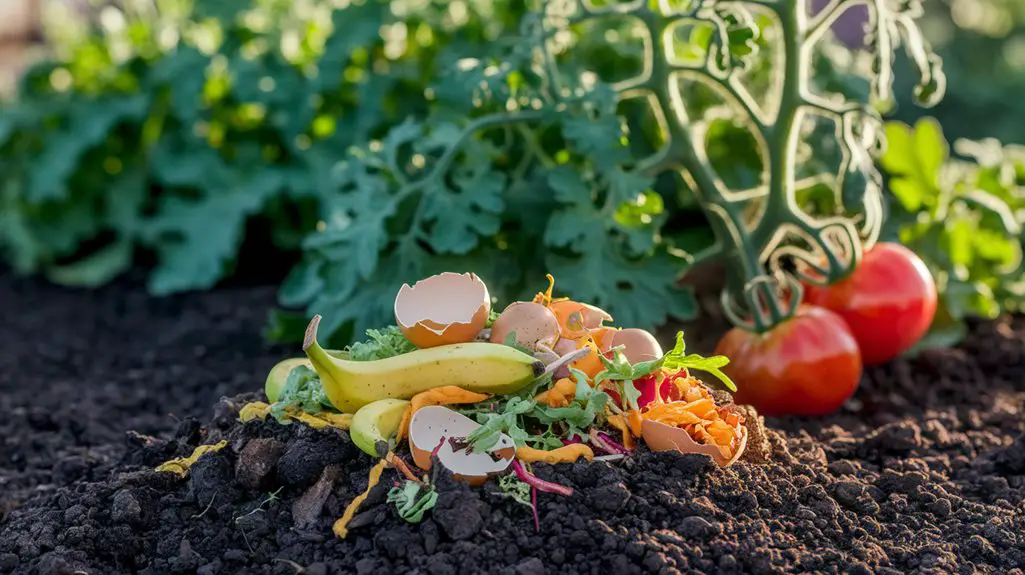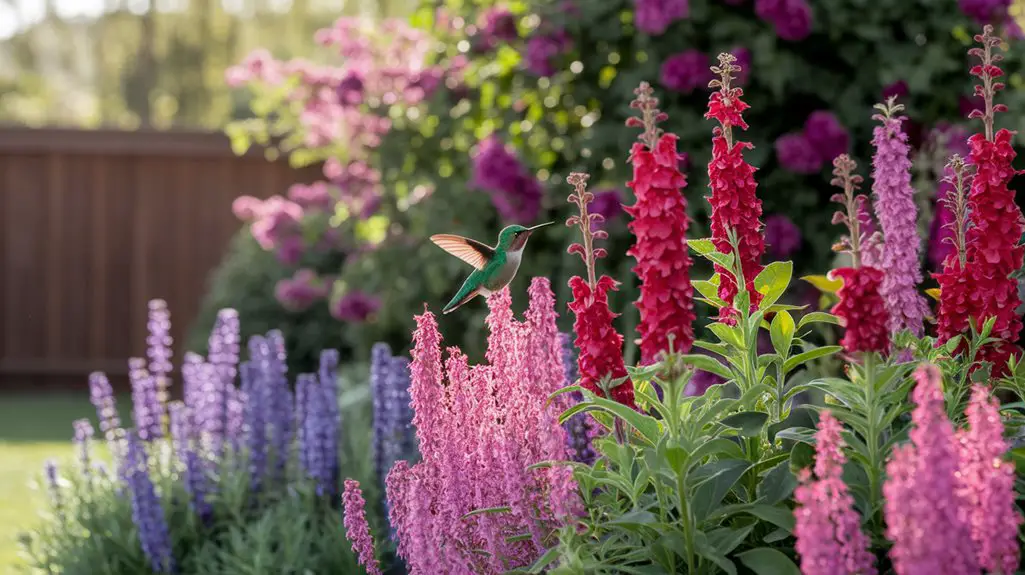Imagine transforming your backyard into a vibrant sanctuary teeming with wildlife, a project that's both exciting and educational for kids. By crafting a miniature pond or building birdhouses, your little ones can learn about nature firsthand. Planting native flowers or creating a simple bug hotel will spark their curiosity. This journey fosters environmental stewardship and creativity. Ready to inspire the next generation of eco-friendly enthusiasts?
Selecting the Right Location for Your Habitat
When choosing the perfect spot for your backyard habitat, consider the needs of the plants and creatures you want to attract.
Decide on a sunny or shady area based on which plants you'd like to grow. Many wildlife-friendly plants thrive in sunlight, but some critters prefer cooler, shaded spots too.
Look at your yard's natural features, like existing trees or shrubs, which can provide shelter and food. You'll also want to find a location close to a water source to save time and energy when watering.
Keep an eye on areas where wildlife already congregates—birds love bushes while insects might favor a rock garden. Additionally, incorporating wildlife-friendly plants can significantly enhance the biodiversity in your habitat.
Creating a Miniature Pond for Wildlife
A miniature pond can be a delightful addition to your backyard habitat, providing essential water resources to a variety of wildlife. Start by selecting a shallow container like a large plant saucer. Position it in a shady spot to limit algae growth. Fill your pond with rainwater if possible—it's better for wildlife than tap water. Add rocks and logs around the edges for easy access and escape routes for small creatures. Additionally, creating a welcoming pond habitat will attract more diverse species to your yard.
| Task | Details |
|---|---|
| Container Selection | Use a large, shallow container. |
| Placement | Choose a shady location. |
| Water Source | Prefer rainwater over tap water. |
| Additional Features | Add rocks or logs around the pond's edge. |
| Maintenance | Keep it clean to prevent mosquito breeding. |
With these simple steps, you're helping birds, frogs, and insects stay hydrated!
Building Homes for Birds and Small Creatures
Although creating shelters for birds and small creatures may seem challenging, it can be an enjoyable and rewarding backyard project. You'll not only have fun, but you'll also provide a safe haven for wildlife. Start by gathering a few simple materials and follow these straightforward guidelines:
- Use recycled wood or untreated lumber for birdhouses to guarantee safety and sustainability.
- Incorporate small holes or crevices in your design to accommodate various species.
- Place shelters away from busy areas to minimize disturbances.
- Add a perch for birds to rest and survey their surroundings.
- Regularly clean out old nests and debris to maintain healthy habitats. Additionally, creating a welcoming backyard will attract more birds and enhance their chances of thriving in your garden.
Planting Native Flowers and Plants
If you're looking to enhance your backyard while supporting local wildlife, planting native flowers and plants is an excellent step.
Start by researching which plants are native to your area. These plants require less maintenance and provide natural nourishment for pollinators like bees and butterflies. Additionally, incorporating native species in your garden can help create a balanced ecosystem.
Once you've identified your choices, find a sunny spot in your garden. Use a digging tool and clear the area of any weeds. Loosen the soil to help roots establish themselves.
Plant the seeds or young plants according to their specific needs—spacing is essential! Offer your plants regular watering, especially as they establish.
Kids can help with planting and watering, making it a fun, educational experience. Soon, you'll see local wildlife flocking to your lush garden.
Constructing a Simple Bug Hotel
Planting native flowers isn't the only way to attract local wildlife. By constructing a simple bug hotel, you'll provide a safe haven for helpful insects like ladybugs, solitary bees, and beetles. Creating these habitats with native plants not only supports biodiversity but also enhances the beauty of your garden.
It's an exciting project for kids, encouraging them to explore nature right in your backyard. Gather the following materials and let your imagination run wild:
- Wooden Pallets: The sturdy base for stacking various layers.
- Twigs and Sticks: Ideal for beetle-friendly crevices.
- Hollow Bamboo Canes: Perfect for nesting solitary bees.
- Dry Leaves and Straw: Provides excellent insulation and hiding spaces.
- Pine Cones: Adds texture and refuge for insects to dwell.
Arrange these items within the pallet layers, making sure gaps remain accessible. Your bug hotel will buzz with life in no time!
Making a Butterfly Feeding Station
Creating a butterfly feeding station is a delightful project that invites vibrant visitors to your backyard. You'll need a few simple materials: a shallow dish, overripe fruit, and water. Begin by placing the dish in a sunny spot within your backyard. Arrange slices of fruit like oranges or bananas in the dish and add a little water to keep the fruit moist. This feeding station will not only attract butterflies but also support a pollinator-friendly garden that benefits various species.
Here's a quick reference for essential materials:
| Material | Purpose |
|---|---|
| Shallow dish | Holds the fruit and water |
| Overripe fruit | Acts as a food source for butterflies |
| Water | Keeps the fruit fresh |
| Sunny location | Attracts more butterflies |
| Time to observe | Watch for frequent fluttering visitors |
This simple feeding station can make your backyard a butterfly haven.
Encouraging Eco-Friendly Practices
Encouraging small changes in everyday behavior can have a significant impact. Start by teaching kids simple actions that lead to sustainable living.
Here's how you can instill eco-conscious habits:
- Create a compost bin: Use kitchen scraps and garden waste to reduce landfill contributions and enrich soil.
- Plant native species: Native plants require less water and support local wildlife.
- Start a rainwater collection system: Conserve water by using rain for garden irrigation. Regularly maintaining rainwater harvesting systems ensures optimal performance and prevents issues.
- Practice recycling and upcycling: Turn waste into creative garden projects or habitat features.
- Use natural pest control: Opt for plant-based solutions to protect both plants and beneficial insects.
These steps make eco-friendly living second nature for kids.
Conclusion
You've crafted an enchanting corner of your backyard where birds, bugs, and butterflies bask. By blending biodiversity, building, and botany, your family fosters flourishing flora and fauna. This hands-on habitat harbors not only wildlife but also your child's curiosity and creativity. As you cultivate care for critters and conservation, you're crafting a legacy of love for the land. Celebrate your success by sharing stories and solutions, sparking stewardship in others and sustaining a symphony of nature's sounds.



